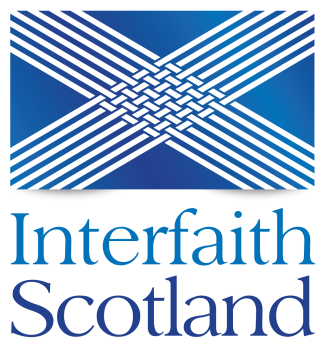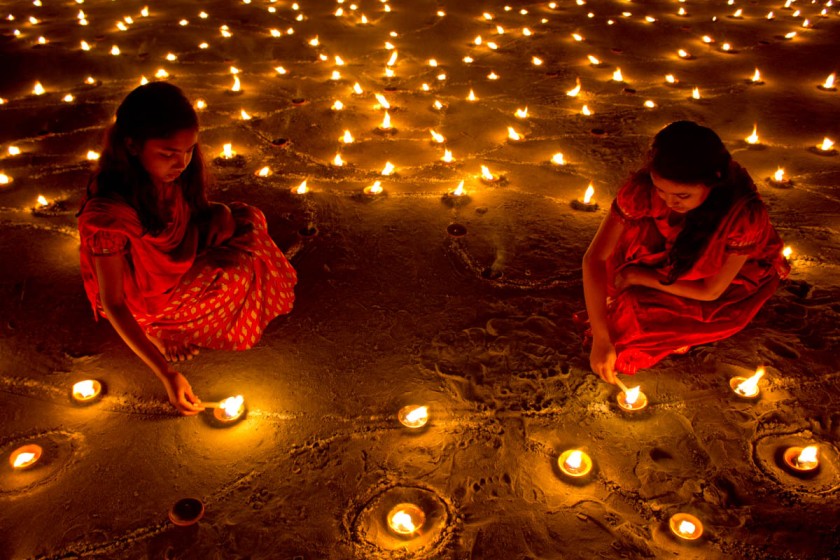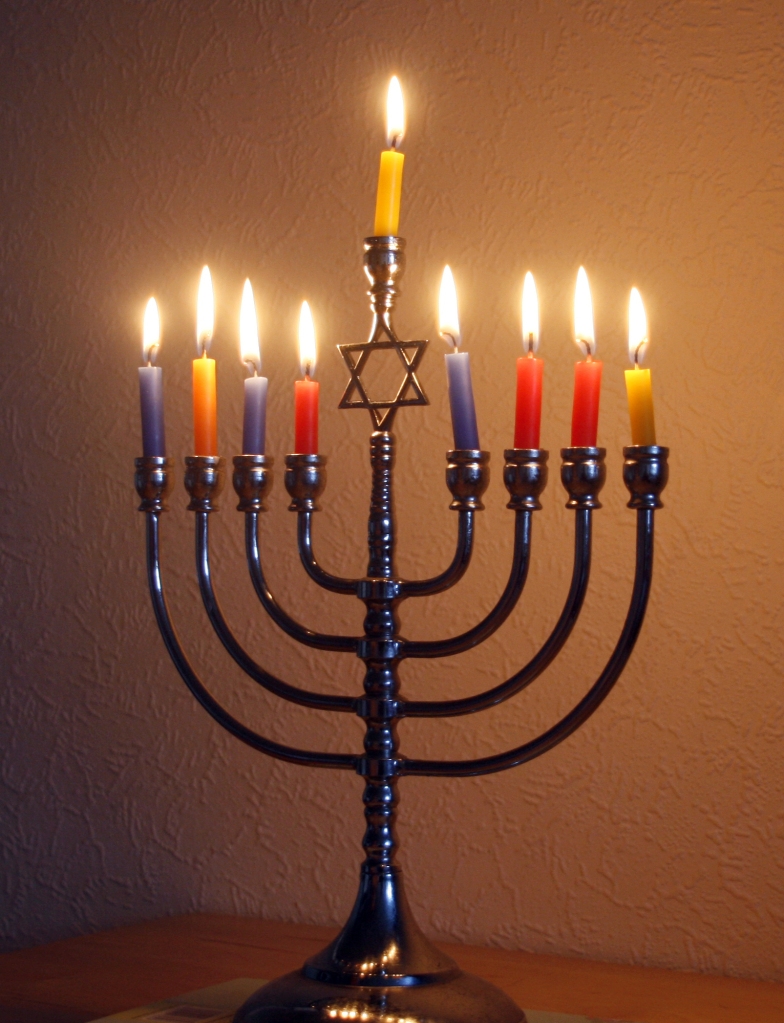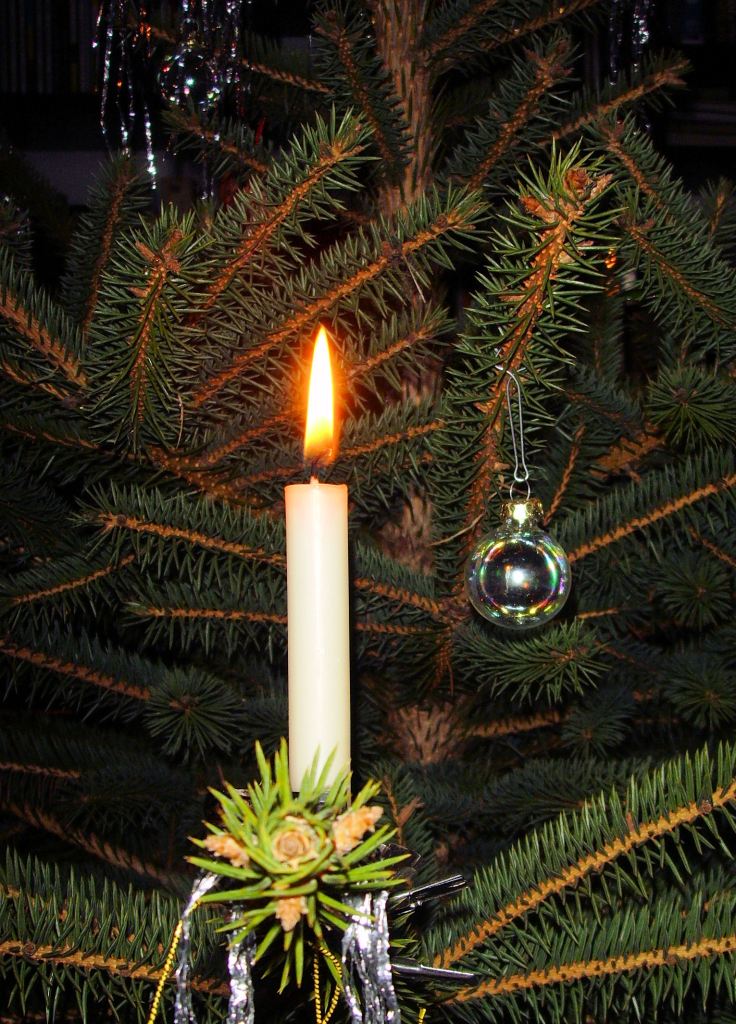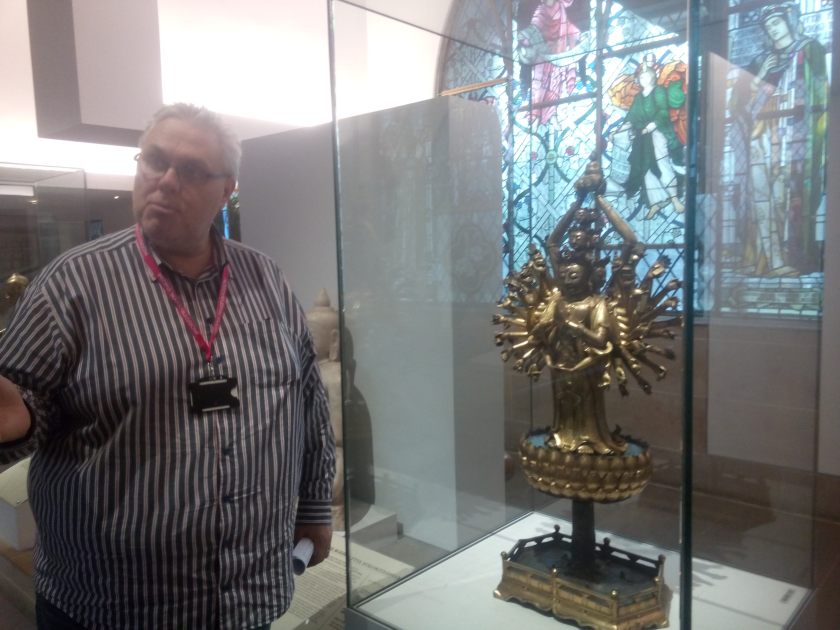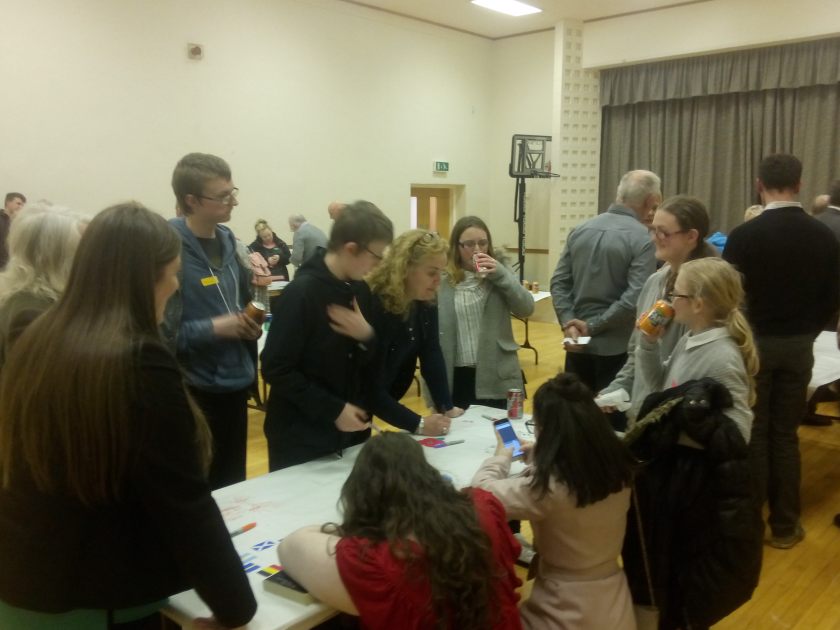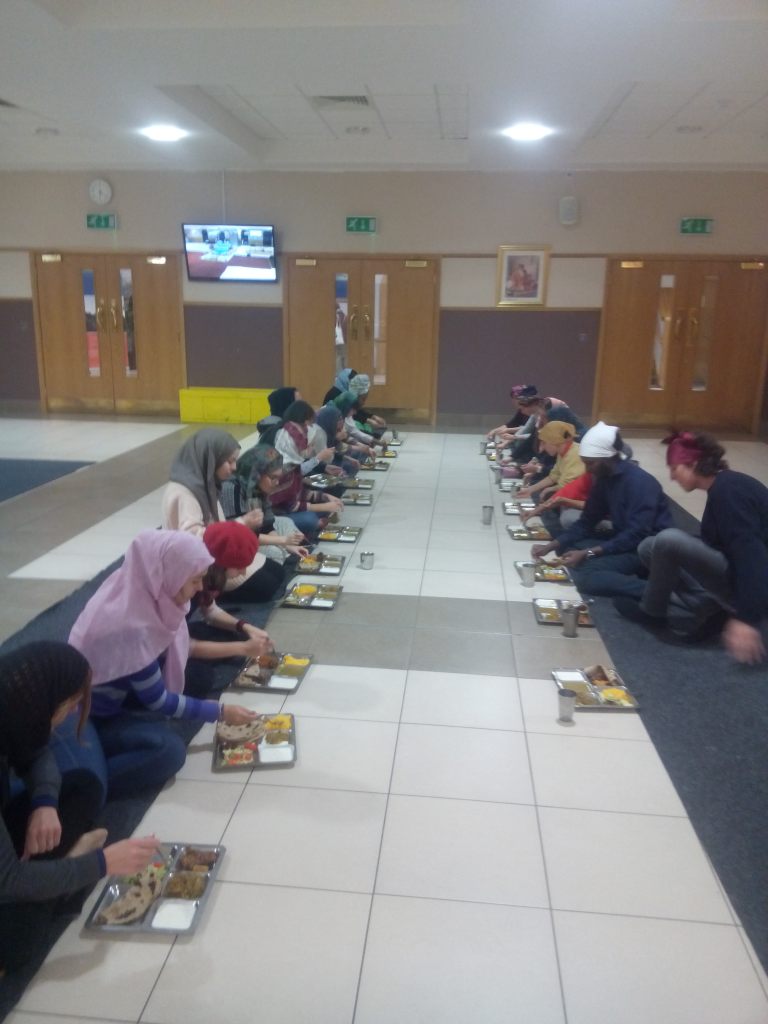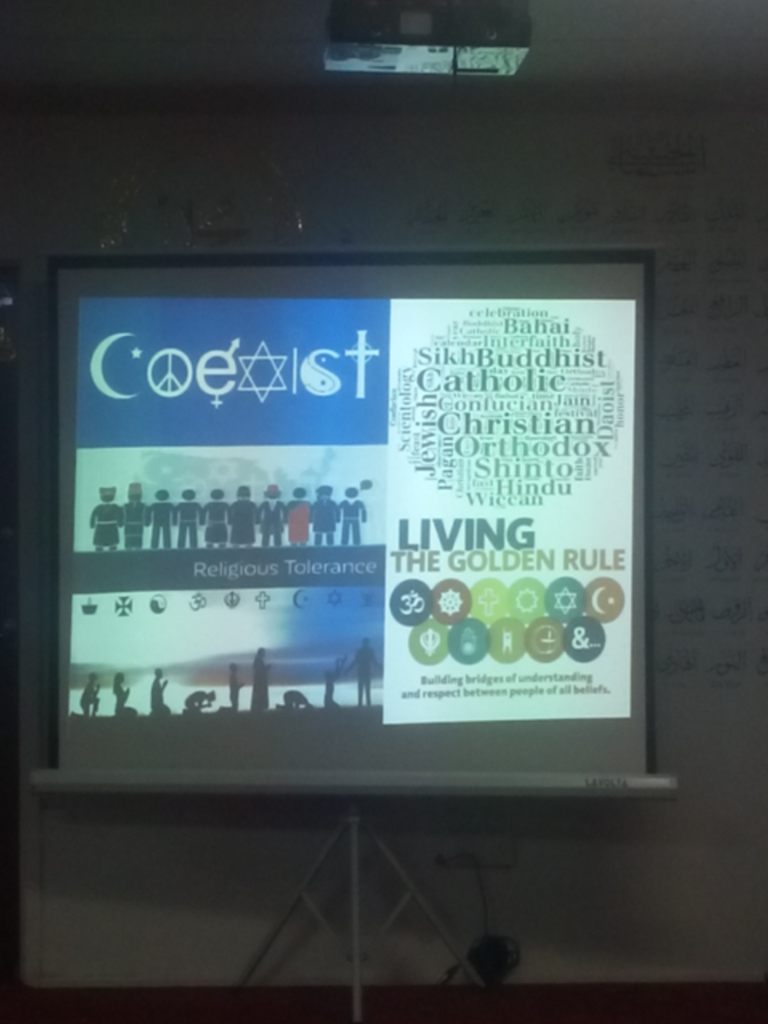This week is Peace One Day and because of that I went to Kilmarnock on Monday and gave a speech about Peace in the family, the community and the world and what interfaith dialogue can do for it. The following text is the manuscript of this speech (but without the general introduction about myself and the work of Interfaith Scotland):
Peace = Shalom
What do you think when you hear the word peace? Do you think about gravestone where you can read Rest in Peace on? Do you think about old man in suits or uniforms shaking hands in front of TV cameras? Do you think about rainbow flags and peace doves?
When I think about peace I think about a town where I lived for about five years. In Münster and its neighbour town Osnabrück the maybe largest peace treaty ever has been signed in 1648. Literally every European state had been involved in the big thirty years war. Started as a religious war between protestants and Catholics it became a big war between the different European powers. Soldiers from Sweden, Denmark, France, Spain, Austria and all the small German states of this time fought against each other. When the peace contract was signed messenger were sent to every country and told the world that war was over. In Münster they had huge celebrations with a lot of dancing and music and all fountains were filled with wine. For the people living in this time after more than one generation of war it must have felt like being in heaven.
But the peace wasn’t for long. Since 1648 Germany, Europe and the world have suffered from a lot of wars. Even when we have the maybe longest peace period in western and central Europe just now, there are so many places in the world where people suffer from war, violence and injustice.
So, what can we say about peace today? Peace in the Family, in the Community and in the world? When I learned Hebrew in university I learned about the Hebrew word for peace – shalom. It’s cognate to the Arabic word salaam and both can be used when you meet someone to say hello or good bye. My teacher at university told me, that shalom does not mean “only” peace in the meaning there is no war, it means also full harmony between god, mankind and the whole creation. It can mean every aspect of wellbeing for individuals or nations or the whole world. So, shalom has a much wider meaning than the English word “peace” or the German word “Frieden”. It is much more general and has a universal perspective of harmony in the world. From my point of view when we talk about peace – we should talk about shalom.
There are so many families here in Scotland and in the world who don’t have shalom. Shalom in a family would mean that parents and children treat each other with respect and love. Shalom in a family would mean that partners are treating each other with respect and love. Shalom in a family would mean that children treat each other with respect and love. Shalom in a family would mean that no one has to suffer from violence. Shalom in a family would mean that no one has to be afraid to tell his or her opinion.
There are so many communities where the people don’t have shalom. Shalom in a community would mean that no one has to stay lonely, because people care for each other. Shalom in a community would mean that no one has to be ashamed about what he or she feels or thinks. Shalom in a community would mean that everyone has enough to live: a place to stay, a meaningful task to do and no sorrows about how to get his or her food for the next day. Shalom in a community would mean, that everyone can live the life he or she wants and everyone respects it.
There is our world and most of the people living here don’t have shalom. Shalom for the world would mean, that there are no wars anymore. Not between states, not between nations, not between religions and faiths. Shalom for the world would mean, that no one has to leave his home because of economic reasons or because his or her life is threatened by war, violence or hunger. Shalom for the world would mean, that mankind stops destroying the environment. Shalom for the world would mean, that everyone can get a good education. Shalom for the world would mean, that no children have to work instead of going to school. Shalom for the world would mean, that all the nations and religions live in peace together instead of claiming supremacy about each other.
Living in shalom in our families, communities and in the world would be a great thing. It would legitimate a big party – much bigger then the parties after the end of the thirty year war in Münster in 1648. But to reach this goal – shalom for the world – is still a long way to go. But it’s a process where everyone is responsible. What did I do for bringing shalom to the world today? What did you do? One possible guideline is the so called Golden Rule which you find in every one of the big religions and faith traditions. “One should treat others as one would like others to treat oneself.” This sentence can be a guideline for our way to shalom. In a world where everyone would treat others as he or she wants to be treated by others no one suffers from violence. In such a world, everyone can tell his or her opinion. In such a world, the different nations and religions work together making the world a better place instead of fighting each other. In such a world, there would be peace in every family, community and the whole world. In such a world there would be shalom. From my point of view this is a goal we should try to reach, even if it seems impossible.
Interfaith dialogue and Peace: 3 examples
So, what could interfaith dialogue do to spread shalom all over the world. I’m having a look at three examples.
From the time of the reformation until the middle of the last century Germany was religiously divided into parts with mainly protestant and parts with mainly catholic population. If someone protestant wanted to marry someone catholic or the other way around they had to decide which religion they wanted to have. They could not be “a mixed couple”. The people from the other denomination weren’t accepted as “true Christians”. And even inside Protestantism it was the same way between Calvinists and Lutheran Christians. That wasn’t a big problem as long as people normally stayed at the same place their entire live. Probably a protestant Lutheran farmer in this time never met a Catholic or Calvinist person. After the industrialisation people got more mobile and it was easier to move to another part of the country and the population got mixed. This blending of the religious denominations increased a lot when after the second world war millions of Germans had to live their home in the former parts of eastern Germany which today belong to Poland or the Czech Republic. When I was training to become a minister, I met a lot of people who had been refugees from these areas when they were children. They told me how difficult it was for example to come to a mainly catholic area as a protestant. The other children were not allowed to play with them and in school they got bad marks only because they belonged to another faith. During the last 60 years the religious differences between Catholics and Protestants and between the different protestant groups became much less important. Today it’s very usual that there are “mixed” families and in many towns and villages Protestants and Catholics work together very well. Even if the relationship is not without tensions so did the dialogue in the last 60 years bring people together who couldn’t have lived together the 500 years before. Maybe this dialogue between different Christian denominations has not brought complete shalom – but it brought shalom to many families and communities and it helped to bring peace to one of the most violent areas in Europe. I think there are examples of this kind of dialogue and reconciliation in Scotland and other parts of the world as well. I hope that the different religions continue the way they started and bring peace to more and more families, communities and countries.
The next example is from Germany as well. During my time at university I lived in a student dormitory for five years. This dormitory was provided by the protestant church and the chaplain was the director of the dormitory but it had an international, ecumenical and interfaith profile. Half of the inhabitants is always from abroad and half is from Germany. Half is male half is female. All were living together in fife corridors. During one semester, I shared my corridor with people from Nepal, Morocco, Syria Ukraine, China, Poland and Germany. Amongst the people from Syria there were Kurdish people as well as Arab Muslims and Arab Christians and the war in Syria had already started. From time to time we met for a big meal together and everybody brought something from his home and we shared it together. In this moment, we nearly forgot about all the differences and tensions. Maybe my flatmates from Syria could forget the sorrow for their families at least for a short moment. It was not important if someone was a Christian, a Muslim, a Zoroastrian, a Hindu or a non-believer it was not important if someone was male or female, it was not important if someone was German, Polish, Ukrainian, Moroccan, Chinese, Arab or Kurdish. We were just together as friends sharing food, drinks, time and joy. For me it was possible to feel the shalom, the complete peace in this moments. If we want to learn something from this about how to build peace it might be, that it’s important to bring people together, to share food with each other and to respect each other. I think many religious groups and charity organisations are doing this and I hope they continue and increase their work.
The third and last example is from the work of Interfaith Scotland. You all know about the difficult political situation in Ukraine. But maybe you are not aware about the strong religious tensions which go ahead with this conflict – I wasn’t aware of it anyway. The two national churches the Ukrainian Orthodox Church and the Russian Orthodox Church have big tensions between them since the end of the Soviet Union. In both cases religious differences are connected and mixed with nationalistic thinking and the conflict and war of the last years has made it impossible that the leaders of the churches speak to each other. Anyway this summer the Director of Interfaith Scotland went with some other dialogue experts to Ukraine and they had one week to learn how to speak to each other. They learned some methods of dialogue, for example sharing stories which were very emotional and to talk about important texts they have in common as the beatitudes from the gospel of Matthew. Of course, this one week won’t bring peace to Ukraine directly but it’s the start to a process and it’s giving some hope that it’s possible to build peace even in such countries as in Ukraine.
Many conflicts in the world are connected with religious differences and often it seems impossible to solve them. Ukraine is one example, Syria and Iraq are others. But if I have a look on the process of peacebuilding and reconciliation in Germany and Western Europe since the second world war and if I remember my experiences in the student dormitory I have the hope to get peace there one day in the future.
What do you think when you hear the word “peace”? I think about shalom and all the steps that are necessary to take for us as human beings and for all the different religious groups and faiths.
Thank you!
